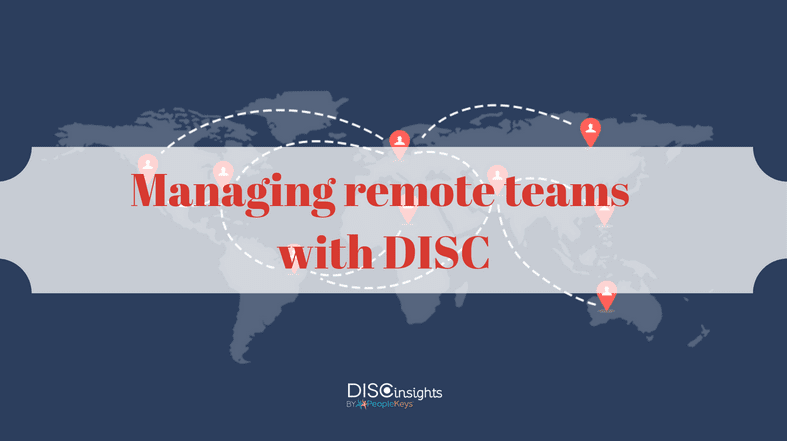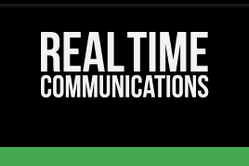
Digital Advertising, Trends & Revenue | What to expect in 2021
PREVIOUSLY PUBLISHED ON NEWS BREAK
“The shift to online spending and the massive increase in audiences for media during the pandemic has driven a new reality for advertisers,” addresses Nev Hasan, Executive Director of Agency Sales at Foxtel.
According to Nev, three out of four Australians (76%) report that they are willing to be interrupted by ads in exchange for free options when streaming movies and television shows.” In fact, the total average view time on streaming services such as Tubi and Crackle have shown an increase of 242% on average year-over-year (YoY).
He continues by saying that from August of this year, “IAS Research in Australia shows 85% of consumers have access to a connected TV device, with 78% of consumers increasing their consumption of streaming content and 49% signing up for new services.”
This comes from a newly-released study conducted by SpotX just last week. SpotX is considered to be the leading video advertising platform for multi-screen monetization and is thought to be shaping the future of TV, on behalf of well-known content and media owners across the globe.
“As we move further into the connected decade, incumbents and new entrants alike will invest in the future of video, while new technologies will quickly emerge to support the evolution,” said Kelly McMahon, SVP of Global Operations at SpotX. “Our goal with the ‘2021 Global Video Advertising Trends’ report is to provide media owners, advertisers and TV manufacturers with the actionable insights they need to position their marketing strategies, align investments, and capture growth in 2021 and beyond.”
Like many of us, SpotX noticed a shift in how we do “TV” and began breaking down the seven different ways that advertisers are now following trends.
We are now living in what many are calling the “connected decade,” where most of our television consumption won’t come from the traditional means. In fact, the entire cable ecosystem is totally losing steam. People are sick of paying for high-priced cable packages and still not finding content that resonates with their interests.
We’re rapidly moving to digital platforms and that will mean advertisers won’t be able to reach us — unless they follow us along the way. Because we have more options, the environment is more diversified and demographic data tends to be less effective. We’re in a world of niche intelligence, where psychographics play center stage and personalized experiences drive impact to what we consume.
Through the pandemic, consumers have become more accustomed to self-curation on a more affordable basis. Digital TVs, mobile and streaming devices have become more popular for this very reason. Advertising will need to be less reactive, post-pandemic, and more reactive.
#1. | There’s a major shift in consumer viewing habits and the type of content being consumed.
At the peak of 2016, global pay TV reached $202 billion in global ad revenue but is expected to fall to less than $152 billion in 2025. Meanwhile, cord-cutters in the United States will be the number one reason for the impending decrease in revenue for pay TV. In 2021 revenue is only set to reach $73.7 million and is projected to further decrease by another $10 million in 2024.
This leaves budgets wide open and advertisers more careful about the type of programming they pair up with. Platforms are a major concern. They want their content to resonate with the consumer and for the consumer to want to buy. Audiences are now more impressionable, as they have found their own space on the digital side.
Content will have to be curated so that the experience will be more enjoyable for the viewer and that enhancements to quality remain a priority. By improving inventory, media owners will be better paired with advertisers who support their cause.
Relevancy will be more immediate through partnership and collaboration. Media owners, producers, advertisers, and manufacturers will team up, share data, and listen to the user. Together, they will improve campaign performance and enjoy greater ROIs to be shared amongst them.
What have they learned so far?
With traditional TV phasing out with such acceleration, creators and advertisers are constantly putting their heads together and reinventing the way we see advertising. As we increase our use of connected TVs (CTT) and over-the-top (OTT) streaming systems, they’re learning more about us!
- Age really doesn’t matter anymore.
- Globally, 40% of adults are CTV consumers. These are people that love their smart TVs and the convenience of using a remote. This includes 50% of an adult audience in Europe and more than 68% of audiences toting a mobile device in the APAC region of the world.
- The median age of viewers in the US is 45, while Europe is 43 and the Asia-Pacific is at 32.
- Streaming viewership seems to double year-over-year with an average of three hours in view-time, a day.
- People actually love free, low-cost, and ad-supported options, as opposed to rising subscription stacks for premium video services. In fact, most people are seeing financial strain during the pandemic and have been experiencing “pay fatigue.”
- If our audiences have no money, how can we expect them to buy?
- In the US, 60% of viewers welcome free contentin exchange for quality video streams. In the Europe and Middle Eastern markets (EMEA), 58%. The Asia Pacific, including Australia, 56%.
#2. | Successful ad spend will depend on following new consumer habits and the flow of OTT/CTV utilization.
Advertisers will keep their ears closer to the street than they ever had before. Actively listening to audiences, paying attention to what they do, and predicting what they will do next will become a solid means for conversion in the years to come.
According to SpotX, some say “brand advertising budgets have only begun to budge from traditional TV as viewership stalls: and that “this mismatch between consumer behavior, budgets, and spending is due for a correction.” This will lead more advertisers to recalibrate both media and marketing plans, while aiming towards a new digital age, globally.
In many countries around the world, consumer demand has rebounded in recovery of the coronavirus pandemic. This comes due, in part, from the monthly stimulus received in each of those countries that would allow citizens to bridge between shutdowns and to live a somewhat normal life, despite orders to stay at home. Many have learned to adapt to the restrictive nature of such a devastating virus on work and travel, experiencing the world in a whole new way.
These industries have seen pre-pandemic growth in advertising revenue and are more than likely to skyrocket once vaccines are administered:
- Automotive Sectors
- Food & Beverage Industries
- Health & Fitness
- Business Services
- Retail & Finance
These industries have seen and will continue to see a continued trend upwards through 2025:
- Art & Entertainment
- Education & Training
- Finance Sectors
- Health & Fitness
- Hobbies & Interests
According to Digital TV Research, media owners will experience a double growth in revenue for global ad-supported video-on-demand (AVOD) by 2025, as it will account for nearly one-third of all OTT revenue across the markets, outpacing subscribers, bar-to-none.
With growth comes a new set of challenges but yet an equal set of opportunities that advertisers can take advantage of. Safety will always be a concern, as maintaining an optimal perception and integrity of each brand and their messages will be a priority. This includes discussion and feedback in places like social media.
Advertisers will want and will be able to control more of the transparency, as it relates to the messaging of media owners and associated brands. They will want to stand out and not to have their messages confused with the messaging of others. For this, we will see more media owners taking back control of their properties and accepting top-bid for their inventory.
The At-Home Experience
Sports fans are more likely to stream from home in the coming seasons. In fact, Dr. Fauci has been advising the public that we should maintain increased crowd control until at least the Fall of 2021.
We have already seen partnerships between Disney and the NBA with solutions, as to how fans could still be a major part of the game while enjoying the view from home. Similarly, the NFL has maintained extreme social distancing guidelines, while welcoming small crowds into each stadium.
Fewer people on the road means less money should be spent on billboards and signage. Fewer people are actually going into the store and more people are shopping online. Digital out-of-home (DOOH) budgets are set to stream as transportation dwindles and consumers spend more time looking at the screen than looking at the horizon.
The rise of mobile advertising is especially popular in the Asia-Pacific (APAC). Places like Japan are ideal targets for mobile-first initiatives. Popular apps environments include gaming, streaming, music, and messaging applications.
Strategic Partnerships
What more and more brands have been finding out, in these last few years, is that partnerships are everything. Influencers, for example, have become the go-to for advertisers that want to keep up with the trend in streaming and interactive experience. The problem is that large audiences may not convert as well as smaller audiences, and smaller audiences may not create a fiscally ideal rate of conversion for advertisers and their clients.
Influencers will most likely be vetted more stringently going forward. Companies, such as IZEA and Amazon’s Influencer Program, will aid advertisers in making the connection with top talent and by saving them significant time, money, and embarrassment in the long-run.
Through partnership with both media owners and content creators, advertisers will gain accessibility. Data privacy has become a greater concern and regulations have been tightened. Media owners will act as gatekeepers, while creators interact with their audiences more intimately. Collaboration is a must. Production will depend on it.
Optimization starts here, as brands join forces to optimize each campaign. Together, they will improve the customer experience. Together they will see improved performance, greater rewards, and much larger audiences, over time.
Optimal Ad Breaks & Placement
Most likely, we will see an uptick in how products are used and discussed in movies, series, and how-tos across the web. We will also see an improvement in where and how ads are delivered to our audiences, how they function, and their frequency across content.
Some will funnel audiences through the sales process. Others will encourage viewers to visit a brand directly, whether in-store or on-site. Relevancy and timing will be factors, redundancies eliminated. Forecasting will improve, based on cause and effect, as advertisers more accurately predict the key success factors of supply-side platforms (SSPs).
Data intelligence will be important in united direct sales with personalized experiences. Programming, demand, and perception will move mountains for marketplaces, both private and public. More customers will waive certain privacies and grant permissions to media owners in order to receive specials deals and privileges.
As tools improve, there will be a greater visibility of content and the success that shortly follows. Campaigns will be more customizable, and assets will be of more value to the creator — ultimately felt by the end-user.
#3. | Device manufacturers will act on new opportunities to build their ad businesses, increase market share, and influence the viewer experience.
Through SpotX’s own analysis of their solutions, we are able to gather a somewhat scalable image of what has already come to pass and what we will continue to see through the new year.
ShiftX breaks down how TV manufacturers will be considered the new advertising powerhouses. Not only will they hold all the answers when it comes to user data, but they will also be a centralized platform connecting niche markets with personalized experiences.
In many cases, audiences will be able to link, directly, to products and services on-the-fly. And, it’s the manufacturers that will not only make this happen but who will make it happen successfully.
SmartTVs have become the number one platform for digital advertising. Going into 2021, ShiftX has projected that 40%+ households will purchase a new SmartTV, whether for the family room or in a more private setting. These set-tops will more than likely replace the HD antenna, altogether, while pay TV phases out over time. This is somewhat reminiscent of the sunsetting of analog TVs and antennas.
COO, Sean Buckley states that “enhancing both viewer and advertiser experiences is becoming a critical differentiator” of cross-platform, cross-content delivery.
A few things to consider:
- SpotX has seen an upwards of an 800% spike in smartTV ad inventory from just March through October of 2020.
- SmartTVs account for 38% of all Internet-connected deviceson the SpotX platform (up 10% from the previous year).
- 54% of the US streams via SmartTV sets, 37% through the various streaming and mobile devices, and 9% via gaming consoles.
- 63% of Europe streams via SmartTV sets, 20% through the various streaming and mobile devices, and 17% via gaming consoles.
Performance Metrics (KPIs)
Analytics will continue to play a vital role in the identification of audience metrics, especially as fragmentation drives audiences in different directions. In some cases, targeting specific audiences will be easier than before. Others will learn that their assumptions stopped at “demographics” and that instead, they will need to enter the actual psyche of their audiences.
Unfortunately, unless they learn who their audiences are, they will continue to rely on first and third-party resources, who will be the gatekeepers of those data sets. Privacy laws will continue to tighten and more regulations will be placed on the collection of this data.
#4. | With programmatic, addressable linear TV is ready for scale.
According to SpotX, “There is a massive opportunity to apply digital technologies and audience data to make broadcast ads targetable and more relevant. The category is finally taking off, with more inventory available and the programmatic pipes built out, expect to see more linear TV (old school television systems) budgets transacted digitally. For programmers, this means tapping into the growing pool of programmatic TV spend that is expected to reach $6.69 billion by 2021 in the US, up from $2.77 billion in 2019.”
#5. | Data-layered campaigns will continue to become more prevalent as brands shift focus on the accuracy and metrics of each opportunity.
Data privacy is a continued concern and challenge as advertisers look to pair their message. Buyers will consider the accuracy of this data to be non-negotiable. They want to know that their message will reach intended audiences and that the message was felt.
According to Ben Mittal, Senior Partner Manager at Acxiom, “Brands must realize it is essential that consumer privacy is protected to enable data-based strategies with actionable results.”
Reach will improve in most circumstances, as like-minded audiences generally gather in similar locations across the streaming infrastructure. Advertisers will become more familiar with their audiences and grow rapport. This, will, in turn, create more value for individual impressions, and advertisers will see just how differently audiences will react in real-time. Their investments will need to become smarter, more precise, more direct. Partnerships will become more common, as content creators bring more than what initially meets the eye.
While more companies begin lobbying the reality that data will become more private, some will convince lawmakers to simplify regulations and privacy policies may become less blanketed on a national level. Currently, a handful of states are more strict than others. However, most states follow federal guidelines, relating to such policy.
Companies, such as Apple and Google, are taking matters into their own hands. They are becoming more proactive in protecting the data of their consumers. Google will phase out the use of cookies in Chrome by 2022. Apple, however, will end its identifiers for advertisers (IFDA) controls by early 2021, making it harder for ad-supported mobile publishing and causing a shift towards alternatives by the device, context, and behavioral cues of consumables.
Due to a growing frustration with the lack of standard privacy law, as well as how data is collected across devices, companies are becoming more focused on what their viewers think about their brand and advertisements that they have seen. Because there is a lack of transparency, much of this will come from trust built by first and third-party affiliations.
What they will want to know:
- Is our brand and its message recognizable, and does it stand out from our competition?
- Is our advertising redundant? How frequently are our viewers seeing our advertisements? Is it too much?
- Do we “own” this space?
- What is the impact advertising is having on our sales?
- Are our ads engaging and are we interacting with our audiences?
- What can we do to improve the overall experience?
- Is our ad being placed alongside quality content? Are media owners projecting the same message in their broadcasts?
- What is the impact on our overall ROI? Are we encouraging more online sales from our message, or are most of our viewers buying in-store?
#6. | Expect a surge in programmatic guaranteed campaigns (including cross-channel advertising).
Per the report, SpotX states that “While advertisers used to treat TV and OTT ad buys separately, they are increasingly considering them together, and the trend is clearly moving towards all TV being transacted digitally. The efficiencies of programmatic buying,” they continue, “and the opportunities to apply data to reach specific audience segments are huge benefits that are accelerating the shift of traditional TV budgets to digital channels.”
Providers will need to offer security in uncertain times. Advertisers want to know their money is being well-spent and that they can look toward the future.
Sunil Naryani, VP of Commercial & Partnerships APAC at dentsu international adds to the conversation, “As programmatic continues to grow and encompass more media channels, aspects that will matter the most are direct publisher access for supply transparency, premium brand-safe content for consumer engagement, and audience accuracy for addressability and targeting.”
He continues, “programmatic buying gains popularity, direct publisher access will become table stakes. There will be an increased expectation from publishers, supply platforms, and agencies to provide incremental value to advertisers by curating supply (media + data) deals considering factors like premium placement, auction priority, performing ad formats, and publisher audience segments.”
This will lead to automated bidding systems, where advertisers are, instead, bidding for ad space, such as already in place on search engines and business-related platforms. There will be a call to buyers in rethinking calendars in the timing of various campaigns. Expect deals to be tied to specific periods of time, exposure to quantifiable audiences, or in syndication to specific markets.
#7. | Both the sell and buy sides will more thoroughly evaluate partners as supply and demand path optimization requirements increase in priority, popularity, and demand.
The goal will be to build more resilient value chains in the buying and selling of advertising mediums. Trusted vehicles will grow, as vendors will need to become more transparent in nature. Stricter vetting will come into play and smaller circles will be made amongst media buyers. We will see improved buys, more of a concern in protecting the integrity of brand perception, and less exposure to fraudulent activities.
Optimizing the value chain will address unexpected hurdles — from last-minute programming cancellations to sudden image-related concerns. Brands will want the ability to act swiftly to capitalize on emerging opportunities in the marketplace. They will want frequent and immediate attention, leading to an increase in boutique partnerships with lesser-known agencies and a partner, who will cater to their every need, as if their mission was intertwined.



